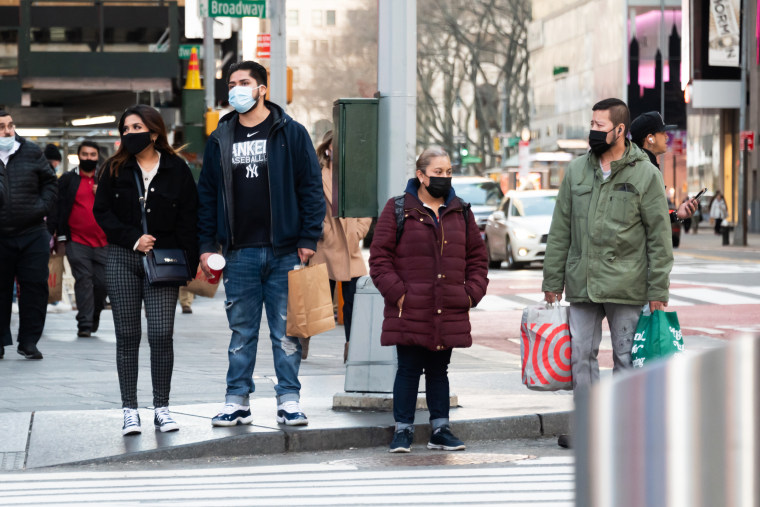Wall Street breathed a sigh of relief Wednesday morning, after a closely watched inflation metric did not show any signs of spiking — which would have triggered higher prices for consumers and also for corporate borrowers.
The Bureau of Labor Statistics’ monthly Consumer Price Index showed a monthly increase of 0.4 percent, in line with economists’ expectations and equivalent to a 1.7 percent annualized rate.
“One thing that’s been spooking the equity market and causing volatility is fear of inflation… a broad-based increase in prices,” said Megan Horneman, director of portfolio strategy at Verdence Capital Advisors.
This is no small threat, since much of policymakers’ plans for recovery hinge on people and businesses being able to borrow money cheaply, and on consumers ramping up their spending as the economy reopens and more people become vaccinated. A spike in inflation could trigger a jump in interest rates or a run-up in consumer prices, either of which could hinder economic activity and slow the pace of a return to full employment.
A spike in inflation could trigger a jump in interest rates or a run-up in consumer prices.
“If interest rates jump more than expected, that will be a concern from a market perspective,” said J.R. Gondeck, managing director at The Lerner Group.
Ham prices leapt by more than 5 percent from January, uncooked roasts of beef jumped by 2 percent, and even the humble hot dog saw a 1.7 percent increase. Egg and butter prices each ticked up by more than 2 percent. Certain fresh fruits also saw sharp monthly increases, with apple prices up by 2.4 percent and citrus fruit prices up by nearly 2 percent. Prices for other fresh fruit (excluding bananas) rose by 3.8 percent.
Gasoline costs spiked by 6.4 percent in February and fuel oil shot up by nearly 10 percent, driven by tighter global oil supply and a bitterly cold February that stoked demand while constraining production activities in the U.S. When historically volatile metrics on food and energy prices were stripped out, the annualized rate ticked down to 1.3 percent, just a fraction lower than the 1.4 percent increase measured in January.
The cost of shelter is a key component of core CPI, making up roughly one-third of the aggregate number. Some analysts warn that the unprecedented housing market distortions that have taken place over the past year could diminish the reliability of the core CPI as a measure of overall inflation.
Nancy Davis, founder of Quadratic Capital Management, argued that the rise in housing costs could be understated by the ways in which the pandemic has shaped housing demand. “The only reason why the CPI isn't higher right now is because of the way it is calculated,” she said.
Davis said the CPI is overly reliant on housing costs in urban areas. Over the past year, both rental and purchase costs for homes in big cities have plunged as the pandemic spurred a flight to the suburbs and small towns by affluent families. “Right now, some housing markets are booming, but some aren’t, and that is keeping the CPI down,” she said.
"The upturn now underway is entirely consistent with rising rental demand and soaring home prices."
“Downward pressure on rents… is fading,” said Ian Shepherdson, chief economist at Pantheon Macroeconomics. “The upturn now underway is entirely consistent with rising rental demand, soaring home prices, and record increases in landlords’ asking rents,” he said, predicting that rents will continue rising.
Market observers characterized year-on-year comparisons of February data as the calm before the storm. Officials like Federal Reserve Chairman Jerome Powell have been sanguine about the likelihood of a short-term bump in inflation later this year as the economy revs back up.
“The next few months are going to be the ones that might spark concerns or make headlines, because you’re going off such weak base effects,” Horneman said.
One aspect of the data Wall Street is watching with a wary eye is the inflation data for prices of services, which rose at a modest annualized pace of 1.3 percent in February, but which some worry could take off if employers have to raise wages to coax workers off the sidelines as businesses shift to pre-pandemic levels of demand.
“That’s concerning because that could spill into the CPI,” Horneman said. “Services is the one area — if there's one area that’s going to concern me — as far as how it can impact the economy,” she said. Roughly two-thirds of the American economy is driven by consumer spending, and roughly two-thirds of that is spent on services, meaning that soaring prices for services could tamp down the pace of the recovery. “That’s the one thing that could impact spending from the consumer side,” she said.
